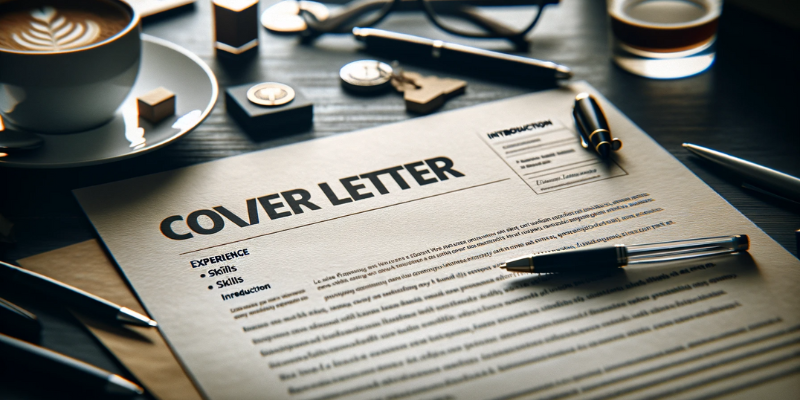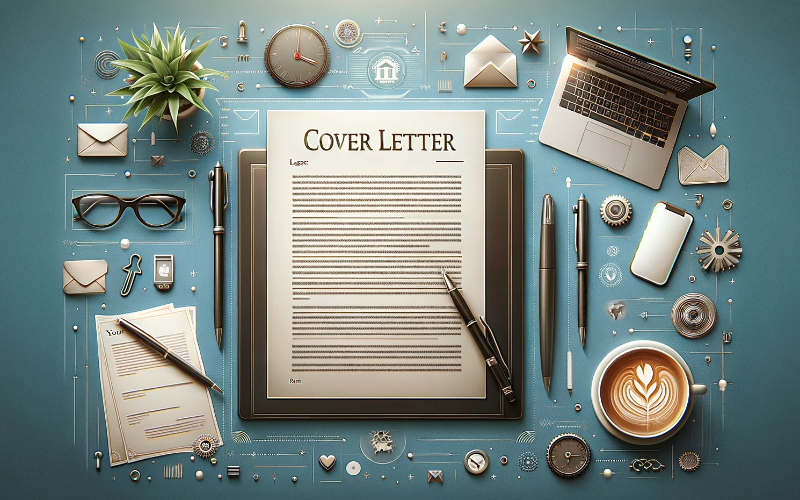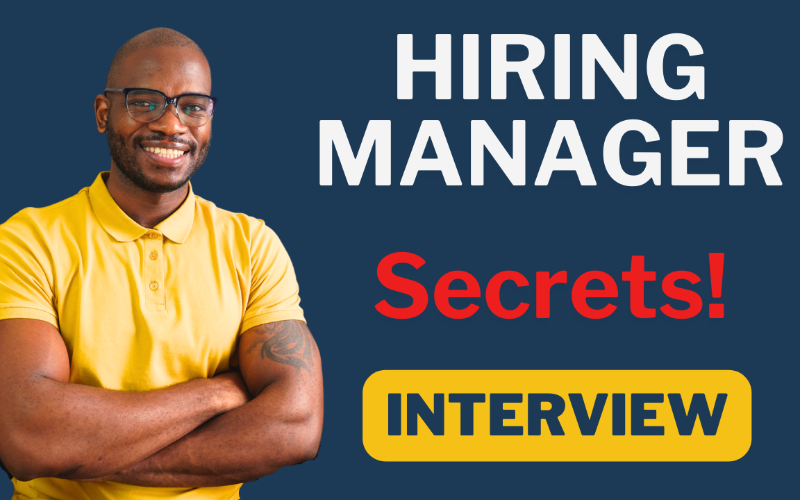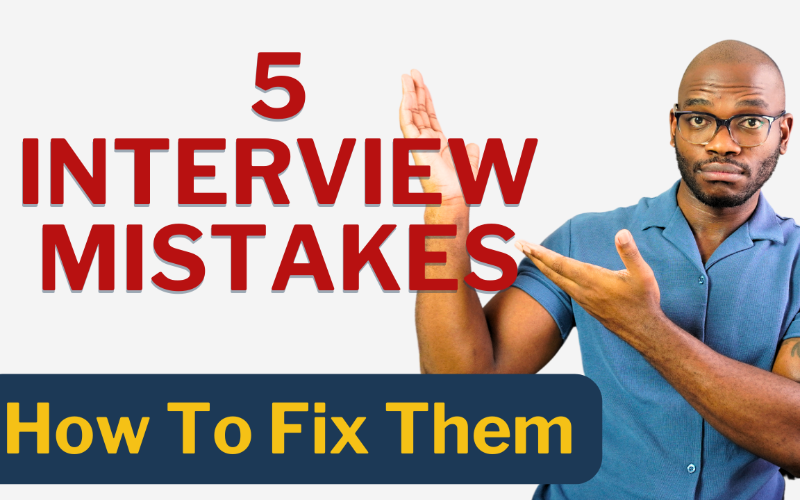A cover letter can be the gateway to your dream job. In a competitive job market, a well-crafted cover letter is not just an addition to your job application – it's a persuasive piece of personal marketing. This comprehensive guide is designed to walk you through the process of writing a cover letter that not only catches the attention of hiring managers but also compels them to give your application a closer look. Whether you're new to the job market or a seasoned professional, mastering the art of writing a compelling cover letter is crucial in making a memorable first impression. The importance of a cover letter cannot be overstated. It's your opportunity to personally address potential employers and highlight why you're the ideal candidate for the job.
Table of Contents
Understanding the Purpose of a Cover Letter
A cover letter is more than a mere formality; it is a personal introduction and a critical component of your job application. Unlike a resume, which outlines your skills and experiences in a straightforward manner, a cover letter allows you to connect these qualifications directly to the job requirements. It's your chance to explain how your specific experiences make you the right fit for the position and to showcase your personality and enthusiasm for the role.
Difference Between a Cover Letter and a Resume
While a resume provides an overview of your professional background, a cover letter offers a narrative. It gives context to your resume by elaborating on key experiences and explaining how they're relevant to the job you're applying for.
Personalization is Key
Each cover letter should be tailored to the specific job and company. This shows the employer that you've done your research and are genuinely interested in the role. A personalized cover letter can make a significant difference, especially when applying to companies that value culture and individual fit.
First Opportunity to Stand Out
Your cover letter is often your first point of contact with an employer. It's your chance to grab their attention and make a strong first impression. Well-written and thoughtful, it can set you apart from other candidates who may have similar qualifications.
Key Takeaway: The purpose of a cover letter is to bridge the gap between your resume and the job at hand. It's an essential tool for explaining your unique value proposition and for making a memorable first impression with potential employers.
Before You Start Writing

Preparation is key to crafting an effective cover letter. Before you begin writing, it's important to lay the groundwork to ensure your cover letter is as impactful as possible.
-
Researching the Company and Position: Understanding the company's culture, values, and the specifics of the job position is crucial. Visit the company's website, read news articles about them, and understand their industry and competition. This knowledge will allow you to tailor your cover letter to fit the company's ethos and the job's requirements.
-
Understanding the Job Description: Carefully analyze the job description. Identify the key skills and experiences the employer is looking for. Make a list of these points, as they will guide you in highlighting the most relevant aspects of your background.
-
Gathering Personal Anecdotes and Achievements: Think of specific anecdotes and achievements in your career that align with the job requirements. These stories should demonstrate your skills, problem-solving abilities, and successes. Having these examples at hand will make it easier to write a compelling narrative.
Key Takeaway: The more you know about the company and the job, the better you can tailor your cover letter. Doing your homework shows the employer that you are serious about the position and sets the foundation for a persuasive and relevant cover letter.
The Structure of a Compelling Cover Letter

A well-structured cover letter is easy to read and allows you to present your information logically and effectively. Here's a breakdown of the typical structure:
-
Standard Format of a Cover Letter: A cover letter usually follows a simple format – an introduction, a body, and a conclusion. It should be no longer than one page to keep it concise and to the point.
-
Introduction: Your opening should be engaging and tailored to the specific job. It should include a brief introduction about yourself and why you are interested in the role and the company.
-
Body: This section is the core of your cover letter. It should detail your relevant skills, experiences, and achievements. Use specific examples to demonstrate how you've utilized these skills in the past and how they make you a suitable candidate for the position.
-
Conclusion: Conclude your cover letter by reiterating your interest in the role and expressing your eagerness to discuss your candidacy further. Include a call to action, such as inviting them to contact you for an interview.
Key Takeaway: Structuring your cover letter effectively ensures that your key messages are conveyed clearly. Each section – the introduction, body, and conclusion – plays a crucial role in engaging the reader and reinforcing your suitability for the role.
Crafting an Engaging Introduction
The introduction of your cover letter sets the tone for the entire document. It's your chance to grab the employer's attention and make them want to read more.
-
How to Start Your Cover Letter: Begin with a strong opening line that captivates the reader. This could be a brief statement about your enthusiasm for the role, a notable achievement, or a unique aspect of your professional background.
-
Grabbing the Employer's Attention: Personalize the introduction for each job application. Mention the specific job title, and if possible, address the letter to a specific person, such as the hiring manager. This shows that you've taken the time to customize your application.
-
Examples of Effective Opening Lines:
-
"I was excited to discover the opening for [Job Title] at [Company Name], as my background in [Relevant Experience] directly aligns with your needs."
-
"Winning the [Award Name] last year was a major milestone in my career, and I am eager to bring the same level of excellence to the [Job Title] role at [Company Name]."
-
Key Takeaway: A compelling introduction is crucial in making a strong first impression. It should be engaging, personalized, and set the stage for the rest of your cover letter.
Writing the Body of the Cover Letter
The body of your cover letter is where you delve into the details of your professional experiences and skills, connecting them directly to the job you're applying for. This section is your opportunity to showcase why you are the ideal candidate.
Highlighting Relevant Skills and Experiences
Reflect on the job description and align your skills and experiences with the requirements listed. For each skill or experience, provide specific examples or brief stories that demonstrate your capabilities and successes. For instance, if the job requires leadership skills, describe a situation where you successfully led a team or a project.
Discussing Achievements and Aligning Them with Job Requirements
Whenever possible, quantify your achievements with data or specific outcomes. This could include sales growth percentages, efficiency improvements, or successful project completions. These quantifiable achievements make your accomplishments more concrete and relatable to the potential employer.
Storytelling Techniques
Use storytelling to make your cover letter more engaging. Instead of just listing your achievements, narrate them in a way that paints a picture of your problem-solving process, your ability to overcome challenges, and your determination to achieve results.
Key Takeaway: The body of your cover letter should be a blend of storytelling and factual data that together illustrate your suitability for the role. It's about making a compelling case for why your skills and experiences make you the right candidate for the job.
Concluding Your Cover Letter
A strong conclusion is essential for a memorable cover letter. It should leave the employer with a clear impression of your enthusiasm and readiness for the role.
-
Effectively Concluding the Cover Letter: Sum up your interest in the position and restate how your skills and experiences make you a perfect fit. Express your eagerness to bring your strengths to the role and contribute to the company.
-
Reinforcing Your Interest: Make it clear that you are enthusiastic about the opportunity and that you see a great fit between your skills and the company's needs. This reaffirms your interest in the role and shows that you are not just looking for any job, but specifically this one.
-
A Call to Action and Polite Sign-off: End your cover letter with a call to action, such as stating your availability for an interview or a follow-up call. Use a professional closing, like "Sincerely" or "Best regards," followed by your name.
Key Takeaway: The conclusion of your cover letter is your final chance to make an impact. Make it count by summarizing your interest and leaving the employer with a sense of your enthusiasm and the value you would bring to the role.
Customizing Your Cover Letter for Different Jobs
Tailoring your cover letter for each job application is crucial for showing potential employers that you're a perfect fit for their specific needs. Customization goes beyond merely changing the company name and job title; it involves aligning your letter with the unique aspects of the job and the company culture.
Strategies for Tailoring Your Cover Letter
-
Research the company culture and values, and reflect this understanding in your cover letter.
-
If thecompany values innovation and creativity, for example, highlight experiences where you demonstrated these qualities.
-
Analyze the job description and use similar language in your cover letter. This not only shows that you are a good fit but also helps your letter resonate with the employer.
-
Address the specific requirements of the job by providing examples from your past experiences that directly relate to these needs.
Importance of Adapting to Different Industries
If you're applying to jobs in different industries, it's important to understand the nuances of each and adapt your cover letter accordingly. Different industries may value different skill sets and experiences, so emphasize the most relevant aspects of your background for each.
Key Takeaway: A cover letter that’s tailored for each job application demonstrates to employers that you have put in the effort to understand their specific needs and how your skills and experiences make you an ideal candidate for that particular role.
Common Mistakes to Avoid
Even a well-intentioned cover letter can fall short if certain common mistakes are not avoided. Being aware of these can help you craft a more effective letter.
List of Common Cover Letter Errors
-
Writing a generic cover letter that could apply to any job or company. Generic letters lack the personal touch that makes your application stand out.
-
Making the letter too long or too short. Aim for about three to four paragraphs – enough to convey your message without overwhelming the reader.
-
Focusing too much on yourself without tying your experiences to the needs of the company and the role.
-
Neglecting to proofread, leading to typos and grammatical errors, which can be a significant turn-off for employers.
Examples of Clichés and Overused Phrases
Avoid phrases like “I’m a hard worker” or “I’m a team player.” These are overused and don’t convey concrete information about your abilities or experiences.
Key Takeaway: Steer clear of common mistakes and clichés in your cover letter. Instead, focus on crafting a well-balanced, personalized, and error-free letter that effectively showcases your fit for the role.
Proofreading and Finalizing Your Cover Letter

The final step in creating your cover letter is proofreading and polishing it to ensure it's ready for submission. This stage is crucial for making a professional impression.
Tips for Proofreading and Editing
-
Read your cover letter out loud to catch any awkward phrasing or grammatical issues.
-
Use tools like Grammarly or Hemingway Editor to help identify errors and improve readability.
-
Ask a friend, mentor, or professional contact to review your cover letter. They may offer valuable feedback and catch errors you might have missed.
Importance of Feedback
Constructive feedback can provide insights into how your cover letter might be perceived by others. It can help refine your tone, clarity, and the overall effectiveness of your message.
Key Takeaway: A well-proofread and polished cover letter reflects your professionalism and attention to detail. It's an essential step to ensure your application is taken seriously by potential employers.
Cover Letter Format and Design Tips
While the content of your cover letter is crucial, its format and design also play a significant role in making a good impression.
-
Choosing the Right Format and Design:
-
Stick to a simple, professional format. Use a legible font, such as Arial or Times New Roman, and keep the font size around 10-12 points.
-
Ensure sufficient white space for easy readability. Margins should be around 1 inch on all sides.
-
If sending a physical letter, use quality paper. If sending electronically, ensure the document is compatible with most software, like a PDF format.
-
-
Using Professional Templates: Templates can be a great starting point, especially if you’re unsure about design and layout. However, customize the template to suit your style and the job you’re applying for.
Key Takeaway: The format and design of your cover letter should enhance its readability and professionalism. While creativity can be a plus for certain industries, it’s important to maintain a balance and keep the look professional.
Advanced Tips for Experienced Professionals
For seasoned professionals, the cover letter is an opportunity to highlight your extensive experience and leadership qualities. Here are some tips to ensure your expertise shines through:
-
Showcase Your Experience and Leadership: Focus on experiences that demonstrate your leadership skills, strategic thinking, and significant achievements in your field. Highlight key projects you've led, challenges you've overcome, and the impact you've had on your previous organizations.
-
Balancing Professionalism with Personality: While it's important to maintain a professional tone, don't be afraid to let your personality come through. This can be particularly effective in showing cultural fit, an important aspect for many employers.
-
Demonstrating Industry Insight: Use your cover letter to showcase your understanding of industry trends and how they relate to the role you're applying for. This demonstrates not only your experience but also your ongoing commitment to staying current in your field.
Key Takeaway: For experienced professionals, a cover letter is more than a summary of your resume. It's a platform to showcase your leadership, insights, and the unique value you can bring to the role.
Additional Resources
To further aid in writing an effective cover letter, consider exploring additional resources:
Books and Guides
There are numerous books and online guides that offer in-depth tips on cover letter writing. Some popular choices include "Cover Letter Magic" by Wendy S. Enelow and Louise M. Kursmark, and "The Cover Letter Book" by James Innes.
Professional Writing Services
If you're struggling to craft your cover letter, professional writing services can provide assistance. These services can offer personalized guidance and help you create a letter that stands out.
Online Tools
Tools like 3Sixty Careers offer cover letter templates that can be customized to suit your style and the industry you're targeting. Additionally, writing tools like Grammarly can help ensure your letter is grammatically sound and professional.
Key Takeaway: Utilizing additional resources can provide you with valuable insights and tools to craft a compelling cover letter. Whether it's through books, professional services, or online tools, there are numerous ways to enhance your cover letter writing skills.
Conclusion
Writing a compelling cover letter is an essential skill in the job application process. By understanding the purpose of a cover letter, structuring it effectively, and tailoring it to each job, you can significantly increase your chances of landing an interview. Remember, your cover letter is your opportunity to make a strong first impression and to convey not just your qualifications, but your passion for the role and your potential as an employee.
Final Thought: Take the time to craft a thoughtful, well-written cover letter for each application. It's an investment in your job search that can pay off with the opportunity to showcase your unique qualifications and land the job you desire.
FAQs
Q1: How long should my cover letter be?
-
A: Aim for a maximum of one page. This length is sufficient to convey your message concisely while providing enough detail to engage the reader.
Q2: Should I include a cover letter even if it's not required?
-
A: Yes, a cover letter can still be a valuable addition to your application, even if it’s not required. It shows initiative and provides an opportunity to stand out from other candidates.
Q3: Can I use the same cover letter for multiple job applications?
-
A: It’s not advisable. Tailoring your cover letter to each specific job and company is crucial for demonstrating your interest and suitability for that particular role.









